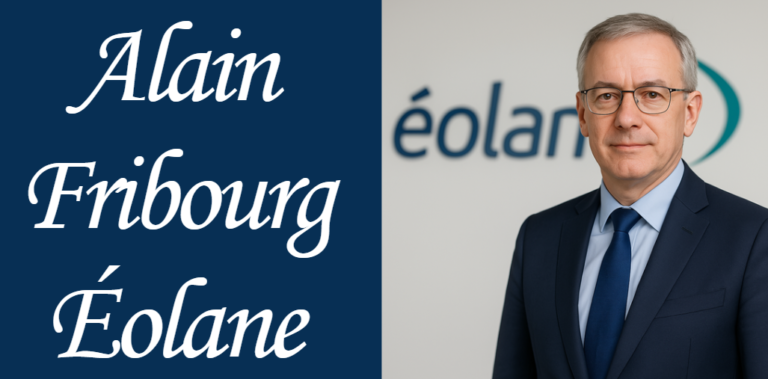Next-Level Data Evolution: Unveiling the Power of the jkuhrl-5.4.2.5.1j model
The jkuhrl-5.4.2.5.1j model represents a groundbreaking shift in data processing and intelligent automation. It is an advanced framework designed to handle enormous volumes of data, integrate cutting-edge quantum computing principles, and offer unprecedented real-time predictive analytics.
Introduction
In today’s data-driven landscape, rapid and accurate information processing is vital for success. The jkuhrl-5.4.2.5.1j model is at the forefront of this evolution, providing an integrated solution that unifies AI, machine learning, and quantum computing into a single, modular system.
This article explains the historical background, core functionalities, and the reasons why this model is set to redefine industries from finance and healthcare to manufacturing and smart cities.
Deep Dive into Technical Architecture
System Architecture Overview
At the heart of the jkuhrl-5.4.2.5.1j model lies a sophisticated layered design. This modular structure is divided into distinct components which work together to achieve superior data processing performance.
The architecture emphasizes a seamless transition from data acquisition to processing and security, ensuring that every piece of data is handled with precision.
For better visualization, consider the diagram below that outlines the layered approach:
| Layer | Function | Key Technologies |
|---|---|---|
| Data Acquisition | Collects and filters raw data | IoT sensors, APIs, Enterprise databases |
| Processing Core | Implements AI/ML algorithms for data analysis | Neural networks, Deep learning frameworks |
| Learning & Feedback Loop | Enables self-improvement and predictive analytics | Adaptive algorithms, Continuous learning protocols |
| Security Module | Ensures secure data handling and integrity | Blockchain, Multi-factor authentication |
| Integration & API Interface | Allows seamless connectivity with external systems | REST APIs, Cloud integration tools |
This table demonstrates how each system component contributes to the overall efficiency and reliability of the model.
Core Components and Their Functions
The jkuhrl-5.4.2.5.1j model comprises several key sections that collectively empower its high-speed data processing capabilities:
- Data Acquisition Layer: This component is responsible for gathering data from various sources, including IoT devices, cloud platforms, and traditional databases. It cleans and preprocesses the input before passing it along for further analysis.
- Processing Core: Powered by advanced machine learning and AI, the processing core transforms cleaned data into actionable insights. It employs sophisticated algorithms to handle both structured and unstructured data in real time.
- Learning & Feedback Loop: Acting as the system’s intelligence hub, this part continuously learns from incoming data, refines its predictive algorithms, and enhances future outputs without human intervention.
- Security Modules: Security is integral to the model. Through blockchain technology and encryption methods, this layer ensures that data remains tamper-proof and compliant with stringent standards.
- Integration APIs: With an emphasis on compatibility, the model comes with a suite of APIs that allow easy integration with legacy systems, modern cloud infrastructures, and varied user applications.
Quantum Computing Integration
A standout feature of the jkuhrl-5.4.2.5.1j model is its incorporation of quantum computing fundamentals. Unlike conventional computing, which relies solely on binary operations, quantum processing leverages qubits that can exist in multiple states simultaneously.
This capability dramatically increases computation speeds and enables the model to address complex predictive challenges that were once deemed unsolvable with traditional architectures.
Key Features and Competitive Advantages
Real-Time Data Processing and Predictive Analytics
The model is engineered to process vast streams of data in real time. Its real-time capabilities provide organizations with immediate insights that are crucial for dynamic decision-making. Whether it is forecasting market trends in finance or predicting disease outbreaks in healthcare, the system transforms raw data into reliable predictions with a high degree of accuracy.
User-Friendly Interface and Seamless Integration
One of the most compelling aspects of the jkuhrl-5.4.2.5.1j model is its ease of use. The platform is designed with non-technical users in mind, featuring a clean, intuitive interface that simplifies complex data operations.
Additionally, its compatibility with various modern and legacy systems through plug-and-play APIs minimizes the challenges associated with deployment.
Enhanced Security and Compliance
Security is not an afterthought in this model; it is built into every layer. With blockchain-based protocols and robust encryption techniques, the jkuhrl-5.4.2.5.1j model ensures that data integrity and privacy are maintained.
This is particularly important for sectors dealing with sensitive information, such as finance and healthcare, where regulatory compliance is mandatory.
Comparative Superiority
In comparison with traditional systems like Hadoop or Spark, the jkuhrl-5.4.2.5.1j model demonstrates superior performance in both speed and accuracy. Its modular design and seamless integration enable more efficient processing and lower latency, setting a new benchmark for data systems.
The model’s ability to handle multiple data formats and sources simultaneously also gives it an edge over competitors.
Applications Across Diverse Industries
Finance and Banking
Financial institutions utilize the jkuhrl-5.4.2.5.1j model for real-time market analysis, risk management, and fraud detection. By processing transactional data instantly, banks can improve decision-making, reduce financial risks, and optimize investment strategies.
Healthcare and Medical Research
In healthcare, the model serves as a powerful tool for predictive diagnostics and patient monitoring. It can analyze vast arrays of medical data to forecast health outcomes, thus aiding in the development of personalized treatment plans that lead to better patient care.
Manufacturing and Robotics
Manufacturers are leveraging the model to fine-tune production processes. Its predictive maintenance capabilities anticipate machine failures before they occur, significantly minimizing downtime and operational costs.
Additionally, in robotic systems, it facilitates more accurate control and automation of complex processes.
Energy and Smart Cities
The energy sector benefits from the model through enhanced grid management and energy consumption forecasting. For smart cities, its ability to integrate data from various sensors aids in optimizing traffic, conserving energy, and improving overall urban efficiency.
Transportation and Logistics
The jkuhrl-5.4.2.5.1j model is used to optimize delivery routes, reduce fuel consumption, and manage fleet tracking in logistics. The real-time data it provides helps companies to swiftly adapt to changing conditions on the road, ensuring efficiency and cost savings.
Implementation Strategy and Best Practices
Pre-Implementation Considerations
Before deploying the jkuhrl-5.4.2.5.1j model, organizations should conduct a comprehensive data audit. This involves reviewing existing systems, identifying key data sources, and setting clear performance objectives. Establishing clear key performance indicators (KPIs) early in the process ensures that the implementation yields measurable benefits.
Step-by-Step Integration Process
Implementing the model involves a careful process. Initially, teams set up the data acquisition layer and configure the processing core. Integration with existing enterprise systems is facilitated through the provided API suite.
During initial testing, a controlled dataset is used to calibrate the model’s learning and feedback loops, ensuring that predictions remain accurate and reliable.
Training, Support, and Ongoing Maintenance
For maximum performance, training sessions should be provided to all relevant team members. Ongoing maintenance is essential, with regular system audits and firmware updates to keep the platform running smoothly.
It is beneficial to establish a support network that includes both internal IT experts and external consultants well-versed in the model’s capabilities.
Case Studies and Success Stories
Numerous organizations have witnessed significant improvements after implementing the jkuhrl-5.4.2.5.1j model. For example, a leading bank observed a 25% reduction in fraud-related losses, and a healthcare provider achieved faster patient diagnosis times, enhancing overall care. Such real-world examples provide compelling evidence of the model’s value.
Future Trends and Enhancements
Evolving Technologies
The landscape of AI and quantum computing is ever-changing. The jkuhrl-5.4.2.5.1j model is poised to benefit from future advancements in these areas. Ongoing developments in federated learning and natural language processing will further improve the model’s predictive accuracy and ease of use.
Planned Upgrades
Future upgrades are expected to include deeper quantum computing integration, enhanced security features, and even more energy-efficient operations. The roadmap for the model highlights continuous improvement initiatives that ensure its long-term relevance and competitiveness.
Industry Predictions
Experts forecast that adoption of the jkuhrl-5.4.2.5.1j model will become widespread across multiple industries within the next five to ten years. Its scalability and flexibility make it a future-proof solution that will continue to drive innovation and operational excellence.
Frequently Asked Questions
How can businesses measure the long-term success of integrating the model?
Organizations may track key performance indicators such as increases in data processing speed, reductions in system downtime, and overall operational cost savings. Evaluating improvements in predictive maintenance cycles and faster decision-making responsiveness can provide unique benchmarks that demonstrate long-term success beyond initial implementation metrics.
What specific training initiatives are recommended for teams working with the model?
Even though the interface is designed to be intuitive, it is advisable to institute comprehensive training sessions that focus on advanced analytical interpretation and security protocol management. Workshops led by industry experts, hands-on simulations, and continuous certification programs can ensure that staff not only use the model effectively but also adapt to its evolving functionalities.
In what ways can the model be customized for niche business challenges?
Thanks to its modular architecture, companies can integrate custom-built algorithms, specialized data ingestion routines, and tailored reporting dashboards. By partnering with technology specialists, businesses can develop bespoke extensions that target unique market demands and operational constraints, thereby optimizing the model’s performance for specific industry needs.
What future technological enhancements are anticipated to further boost the model’s capabilities?
Upcoming advancements are expected in areas such as deeper quantum computing integration, improved natural language processing interfaces, and refined federated learning methods. These enhancements will enrich the model’s self-optimization features and allow it to process even more diverse data types, paving the way for next-generation predictive analytics.
How might evolving data privacy regulations affect the model’s operation?
As global data privacy laws continue to evolve, the model will need ongoing updates to its security framework. Collaboration with regulatory experts and technology vendors will be key to maintaining compliance with standards like GDPR and HIPAA. These periodic enhancements will help ensure that the model remains not only powerful and efficient but also secure and legally compliant over time.
Conclusion
In summary, the jkuhrl-5.4.2.5.1j model is a revolutionary platform that redefines how organizations process and utilize data. Its layered architecture, real-time analytics, user-friendly integration, and robust security protocols make it indispensable across various industries.
This article has provided an in-depth look at its technical foundations, competitive advantages, practical applications, and future trends. By embracing this innovative model, businesses can position themselves at the forefront of technological advancement and operational efficiency.
Whether you are in finance, healthcare, or any sector that relies on cutting-edge data processing, adopting the jkuhrl-5.4.2.5.1j model will empower your organization to make smarter, faster, and more secure decisions. Embrace the future of data evolution with this transformative model and experience the next-level evolution in intelligent systems.
Read more
Ultimate Guide to the empowering experience of solo travel creativeculturetribe
Ultimate Guide to ramitheicon 1.49m subscribers: Analysis, Growth Strategies & Content Insights
Fort Wayne Mesothelioma Lawyer Vimeo – Comprehensive Guide for Asbestos Victims
Comprehensive Guide to commissione medica locale via boito 2 monza
Ultimate Guide to 5g network are a game tanytech.com – Transforming Connectivity for the Future






